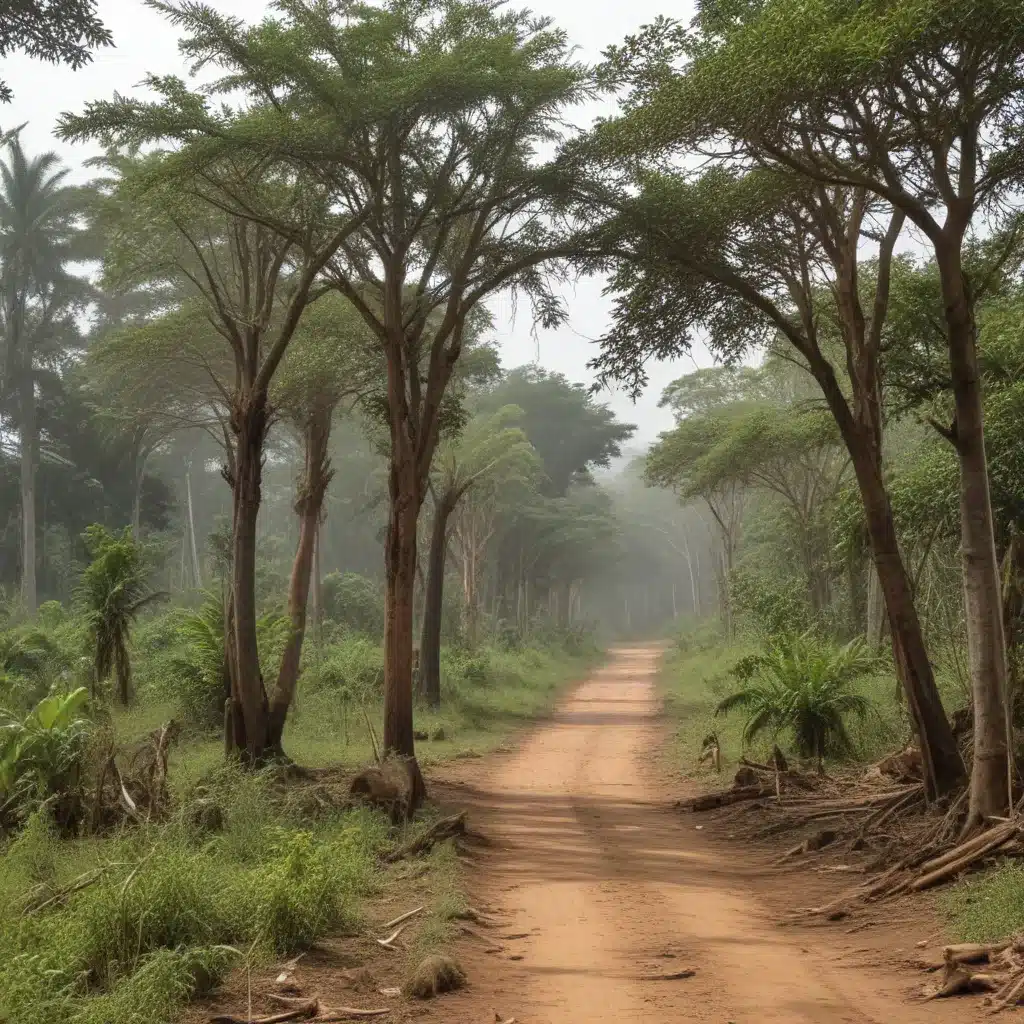
Predicting Deforestation Threats to West Africa’s Urban Biodiversity
The Guinean Forests of West Africa represent a globally significant biodiversity hotspot, home to a diverse array of plant and animal species found nowhere else on Earth. However, the ecological integrity of this region faces immense pressure from deforestation and associated land use changes driven by rapid urbanization and population growth. Understanding the spatiotemporal patterns of forest loss and their underlying drivers is crucial for informing evidence-based conservation strategies to safeguard the region’s irreplaceable biological heritage.
Urban Biodiversity
West Africa’s cities are expanding at an unprecedented rate, straining the capacity of municipal authorities to sustainably manage natural resources and green spaces. The region’s urban biodiversity, found in fragmented forest patches, wetlands, and other natural areas within and around cities, plays a vital role in providing ecosystem services like climate regulation, water purification, and recreational opportunities. Yet, this biodiversity remains highly vulnerable to the impacts of unplanned development, habitat loss, and pollution.
Deforestation Threats
The Guinean Forests are experiencing alarming rates of deforestation, driven by factors such as agricultural expansion, illegal logging, mining, and infrastructure development. Between 2013 and 2023, over 265,000 hectares of forest cover was lost within designated Key Biodiversity Areas (KBAs) – sites of global conservation importance. Worryingly, models predict that some KBAs in Liberia and Côte d’Ivoire could lose over 20% of their remaining forest by 2033, threatening the viability of their unique plant and animal communities.
Conservation Efforts
While protected areas have helped mitigate forest loss in parts of the region, their effectiveness has been uneven. Factors like weak enforcement, inadequate funding, and encroachment have limited the ability of many parks and reserves to safeguard biodiversity. Complementary approaches, such as community-based forest management, sustainable land use practices, and habitat restoration, are needed to bolster conservation outcomes across the Guinean Forests.
Modeling Deforestation Patterns
To predict imminent threats to the region’s biodiversity, researchers have employed machine learning models that leverage historical data on forest cover changes, landscape characteristics, and anthropogenic pressures. These models reveal that deforestation is highly contagious, with past clearing effectively predicting further loss in adjacent areas. Factors like forest fragmentation, road access, and ongoing clearing activity also emerge as important predictors of future deforestation risk within KBAs.
Biodiversity Impacts
The cascading impacts of habitat loss and fragmentation in the Guinean Forests are manifold. Species composition is shifting, with some endemic and threatened species disappearing from degraded forest patches. The disruption of ecosystem functions and services jeopardizes the well-being of local communities who depend on these natural resources. Urgent action is needed to mitigate these biodiversity threats before they become irreversible.
Urbanization Dynamics
West Africa’s urban population is projected to more than double by 2050, amplifying demand for land, resources, and infrastructure. This rapid urbanization is leading to the conversion of forests, wetlands, and other natural habitats to meet the needs of growing cities. Integrating biodiversity conservation into urban land use planning and development strategies is crucial for sustaining the region’s natural capital.
Conservation Strategies
Safeguarding the Guinean Forests’ biodiversity will require a multifaceted approach that addresses the drivers of deforestation at local, national, and regional scales. Strengthening the management effectiveness of protected areas, promoting sustainable land use practices on private and community lands, and fostering cross-border collaboration are among the key priorities. Engaging local stakeholders, including indigenous communities, in the design and implementation of conservation initiatives is also essential for long-term success.
Remote Sensing Applications
Advances in satellite remote sensing and geospatial analysis have provided unprecedented insights into the spatiotemporal dynamics of deforestation in the Guinean Forests. High-resolution imagery and change detection algorithms enable the monitoring of forest cover changes, while predictive modeling can identify hotspots of imminent deforestation risk. These tools are invaluable for guiding targeted conservation interventions and evaluating their effectiveness over time.
Policy Implications
Addressing the complex, multifaceted drivers of deforestation in West Africa requires coordinated policy responses at national and regional levels. Strengthening land use regulations, forest protection laws, and enforcement mechanisms are critical first steps. Aligning these policies with international biodiversity and climate change commitments can further catalyze action and secure much-needed funding and technical support.
Stakeholder Perspectives
Balancing the diverse interests of local communities, government agencies, private sector actors, and conservation organizations is crucial for developing durable solutions to the deforestation crisis. Understanding the nuanced socioeconomic and cultural factors that shape land use decisions is key to designing conservation strategies that are both ecologically effective and socially equitable.
Interdisciplinary Collaboration
Predicting and mitigating deforestation threats to the Guinean Forests’ biodiversity demands an interdisciplinary approach that integrates expertise from fields such as ecology, geography, urban planning, policy analysis, and social sciences. By fostering collaborative research and knowledge-sharing, stakeholders can devise holistic, evidence-based strategies to safeguard this global biodiversity hotspot for current and future generations.
Monitoring and Evaluation
Effective conservation of the Guinean Forests requires robust monitoring and evaluation frameworks to track the impacts of interventions over time. Developing indicators that capture changes in forest cover, species populations, ecosystem services, and human well-being can help guide adaptive management and ensure that limited resources are directed towards the most impactful and sustainable solutions.
Future Research Directions
As deforestation and urban expansion continue to threaten the Guinean Forests, future research should explore emerging threats, such as the impacts of climate change, invasive species, and zoonotic disease transmission. Additionally, the development of novel modeling approaches, remote sensing techniques, and collaborative frameworks can further strengthen the capacity to predict and respond to dynamic deforestation patterns in this globally significant region.
By working together across disciplines and sectors, TriCounty Tree Care and its partners can play a vital role in safeguarding the Guinean Forests’ irreplaceable biodiversity for the benefit of West Africa’s rapidly growing urban populations and the planet as a whole. Visit www.tricountytreecare.com to learn more about our comprehensive tree care services and commitment to ecological stewardship.


